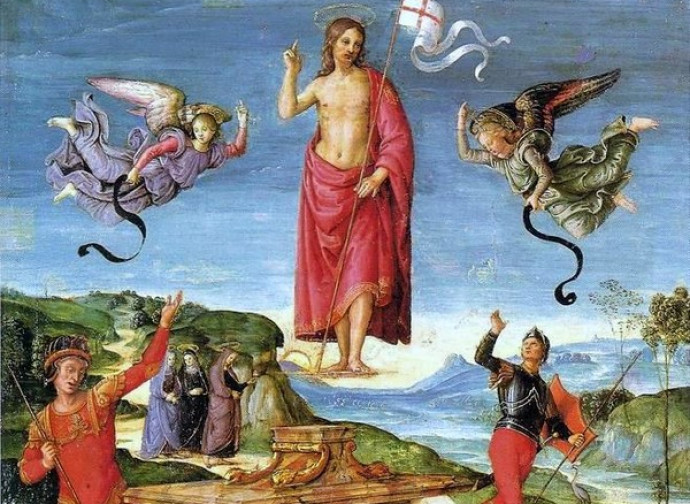Easter of Resurrection
The pain experienced by Jesus on the day of His death on the Cross, which the faithful of all times relive, acquires meaning in the light of the Resurrection, the supreme proof of His divinity and His eternal words: “I am the Way, the Truth, and the Life”

The pain experienced by Jesus on the day of His death on the Cross, which the faithful of all times relive, acquires meaning in the light of the Resurrection, the supreme proof of His divinity and His eternal words: “I am the Way, the Truth, and the Life” (Jn 14:6). Easter is therefore rightly the greatest solemnity for Christians, the heart and culmination of all our faith, which is based on something that happened two thousand years ago. A real event in which the protagonist is not an abstract god, but a God who became flesh, took on human nature in the womb of the Virgin Mary and lived within our own history. As we are told not only by the signs that the Most Holy Trinity has always given since the beginning of the centuries, but by the many eyewitnesses of Christ who died and rose again. These were witnesses in the flesh, who with the strength received by the Holy Spirit after Jesus' Resurrection and Ascension, suffered martyrdom so that their faith would not be silenced.
The Resurrection preceded the radical change of Peter and the other apostles, who had in fact been won over by Jesus even before it, but still within the constraints of human weaknesses, limits and patterns. For example, that is why Peter and John, after Pentecost and the miraculous healing of the forty-year-old cripple outside the temple’s ‘Beautiful Gate’, replied firmly to the synedrium that had imprisoned them and was threatening them to stop them speaking of the risen Christ: “Whether it is right before God to obey you rather than God, judge for yourselves; we cannot keep quiet about what we have seen and heard” (Acts 4:19-20). They had seen Christ's victory over death, which entered the world because of original sin and the deception of Satan, the angel fallen because of his pride, the first adversary of Our Lord and the first to have eternally rejected His Love.
Today's liturgical sequence restores a beautiful sense of the Easter event and of the eschatological combat that underlies it: “Death and Life faced each other in a prodigious duel. The Lord of Life was dead; but now, alive, he triumphs”. It is the Precious Blood of Jesus that has redeemed us and it is His Resurrection that is sure hope of salvation for those who believe in Him and observe His Word. In this regard, the way Matthew recounts the facts at the tomb is significant. What emerges is the contrast between the guards (placed there by the unbelieving Pharisees and high priests, responsible for the crucifixion), who, when they saw the dazzling appearance of the Lord's angel, “trembled with shock”, and the pious women, animated instead by charity, immediately reassured by the heavenly messenger: “Do not be afraid, for I know that you are looking for Jesus, who was crucified. He is not here; He is risen, just as He said! Come and see the place where He was laid. Then go quickly and tell His disciples, ‘He is risen from the dead and is going ahead of you into Galilee. There you will see Him’”.
That empty tomb, which the angel said to “go and see,” speaks to us of the Resurrection. And it was there that Peter and John hurried, alerted by Mary of Magdala: a fact that the fourth evangelist considered important to testify, for the benefit of posterity. Because it was precisely at the tomb, at the sight of the unique way in which the shroud and the bandages were arranged, that John, even before seeing the Risen One with his eyes, “saw and believed”.
Jesus' Resurrection was a unique and unrepeatable event, the cause of human Redemption. But at the same time His Easter is renewed for every Christian in the sacrament of the sacraments, the Eucharist, through the Church, called on by Christ to continue His mission on earth to ensure the faithful have the means necessary for salvation and sanctification, first and foremost His Body and Blood. Hence the command: “Do this in memory of me”. It is Christ's real presence in the Eucharist that makes His sacrifice and gift of Self to men and women perennial. Nourished by His Body, they can live the Paschal Mystery in their persons, passing from the death of sin to new life in Him. Christ is our Easter and the source of true joy, who has regenerated mankind and asks everyone to allow themselves to be drawn into His saving plan, to share in the divine life and to rise again in the body on His glorious return.




